Some of the greatest scenes in movie history take place in a car. The dino-tour in Jurassic Park, the “Contender” speech in On the Waterfront, the “Bohemian Rhapsody” rendition in Wayne’s World — what would these iconic scenes have been without a car? Let’s take a look at how car scenes are captured and how your next car scene can enter the movie automobile pantheon.
Movie Car Scene
The Trailer Method
Driving can be dangerous. Driving while filming can be even more dangerous. The priority of any shoot taking place inside or around a moving car, therefore, has to be safety.
Safety can be achieved in a few ways, and all of them cost money. As such, a car shoot typically can run a budget up. So the first lesson for filming a car scene: make sure you have the money for it.
Once the money’s secured, there are a few different ways to accomplish filming in a car. The first, and most expensive, is a process trailer. This is a low-level truck bed that the picture car (the vehicle being filmed) can sit on.
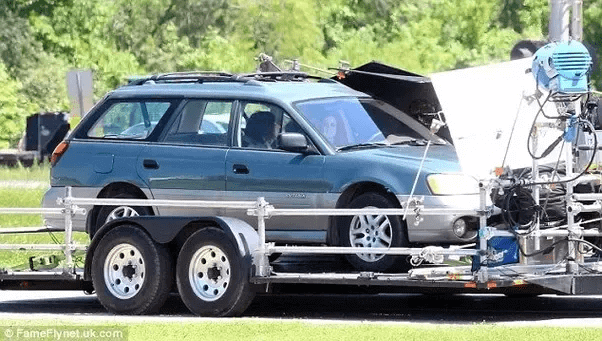
Car scene BTS • How do they film car scenes in movies
There are a lot of benefits to the process trailer. First, it’s safe because the actor doesn’t actually have to drive.
Second, it gives the crew a lot more room to operate around the car. Lights and cameras can be set up on the bed of the truck.

Process trailer in action
But a process trailer may not be ideal for your shoot, and not just because it’s so expensive. A big truck carrying a car doesn’t have much maneuverability, so if you’re trying to shoot a very kinetic car chase, the process trailer could strain believability in the edit.
If you simply want a cheaper version of the process trailer, you can use a tow rig. This is exactly what it sounds like, where the picture vehicle is towed by a truck. Again, this ensures the actor doesn’t need to actually drive, but the catch here is that there’s less space for lighting, camera, and other equipment.
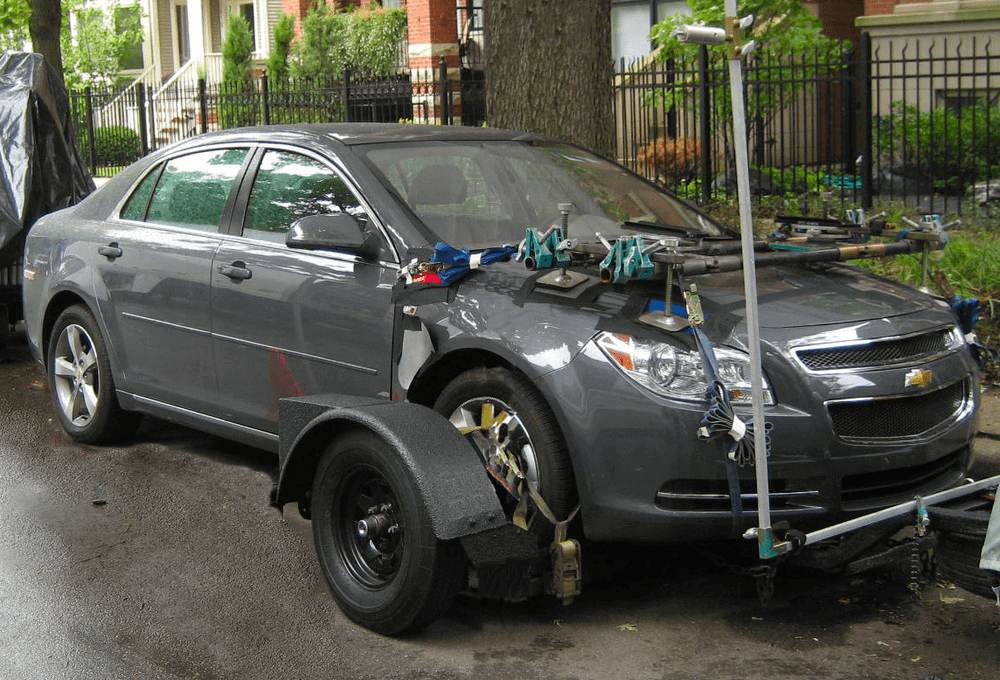
The tow rig
This is all well and good, but let’s say you can’t afford either of these methods. Fear not — you can also shoot in a car which is actually driving.
Car Scenes in Movies
Filming a Driving Car
Filming an actor actually driving is usually a last resort. Often, a stunt driver will be used whenever possible — for example, many car exteriors.
But a stunt driver can also be used while shooting inside the car through the use of a roof pod. This is a driver’s seat fastened to the top of a car where a stunt driver can control the vehicle.
This way, an actor can appear as though they’re driving.
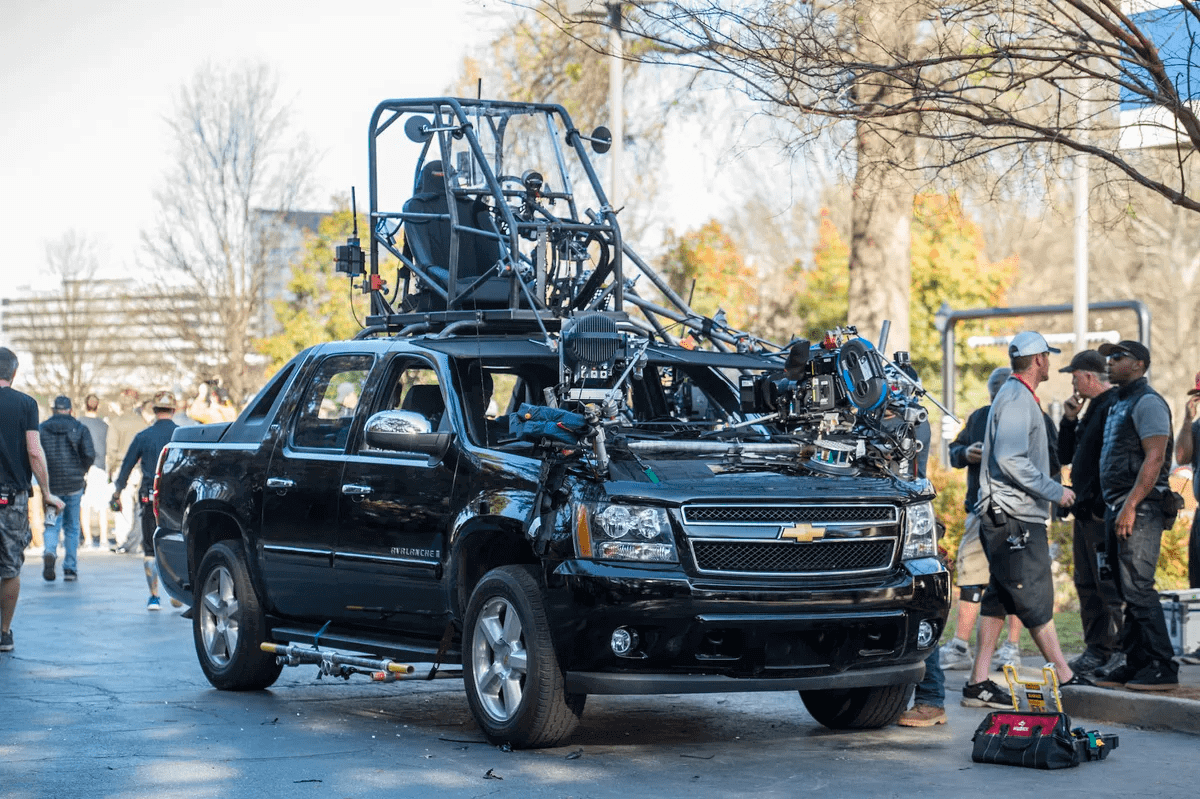
A roof pod in Baby Driver
Either way, camera placement can be difficult when filming in a moving car. Typically, a camera will be mounted onto a car from the outside with a hostess tray, which can fasten onto a vehicle’s window. Usually, a crew will add ratchet straps to make sure the tray doesn’t shift.
A securely fastened hostess tray and camera can result in a steady shot no matter how bumpy the road is. Obviously, you also want a secure camera because that would be a costly loss if it fell off. So make sure nothing’s wobbling around before you put the pedal to the metal.
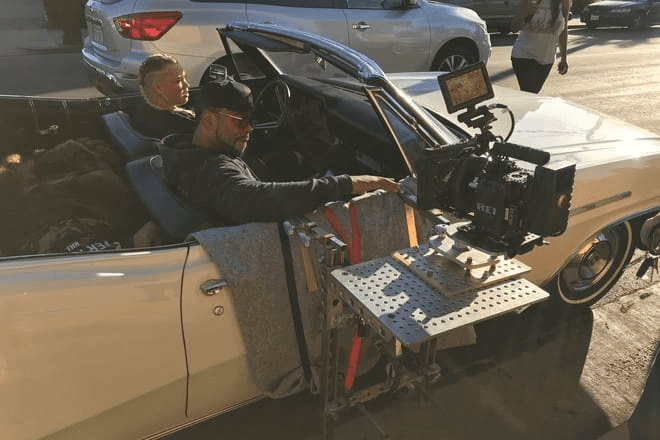
The hostess tray • Car shooting technique
The nature of a moving car shoot usually means there will have to be a mobile video village, which is often based on what is referred to as a lead car. As the name implies, this is a vehicle which drives the same route as the picture car, so that the video village is never too far away.
This mobile video village is where much of the action happens. The production sound mixer will adjust levels there, and the focus puller may be pulling focus remotely. This means the wireless setup needs to be top-notch.
You can see a mobile video village in action here:
Mobile video village
Lighting, too, may be operated remotely. Artificial lighting can be tricky in a moving car, since there’s very limited space where it can be placed. So typically natural light will take the forefront, and most additional lighting will be fill.
As you may have gathered, filming in a moving car can be very difficult. Luckily, there’s another method available.
Driving Scenes
The Poor Man’s Process
The Poor Man’s Process refers to simulating a moving car without actually moving a car. This can be done using a green screen, rear projection, or, increasingly popular, virtual production.
But the hard part about the Poor Man’s Process is not getting the background to move. The trick is to get the lighting to move. You’ve probably seen a bad Poor Man’s Process before, where it is abundantly clear that the car isn’t actually moving and that there is a projection outside the window. Usually, the tell is the static lighting on the actor.
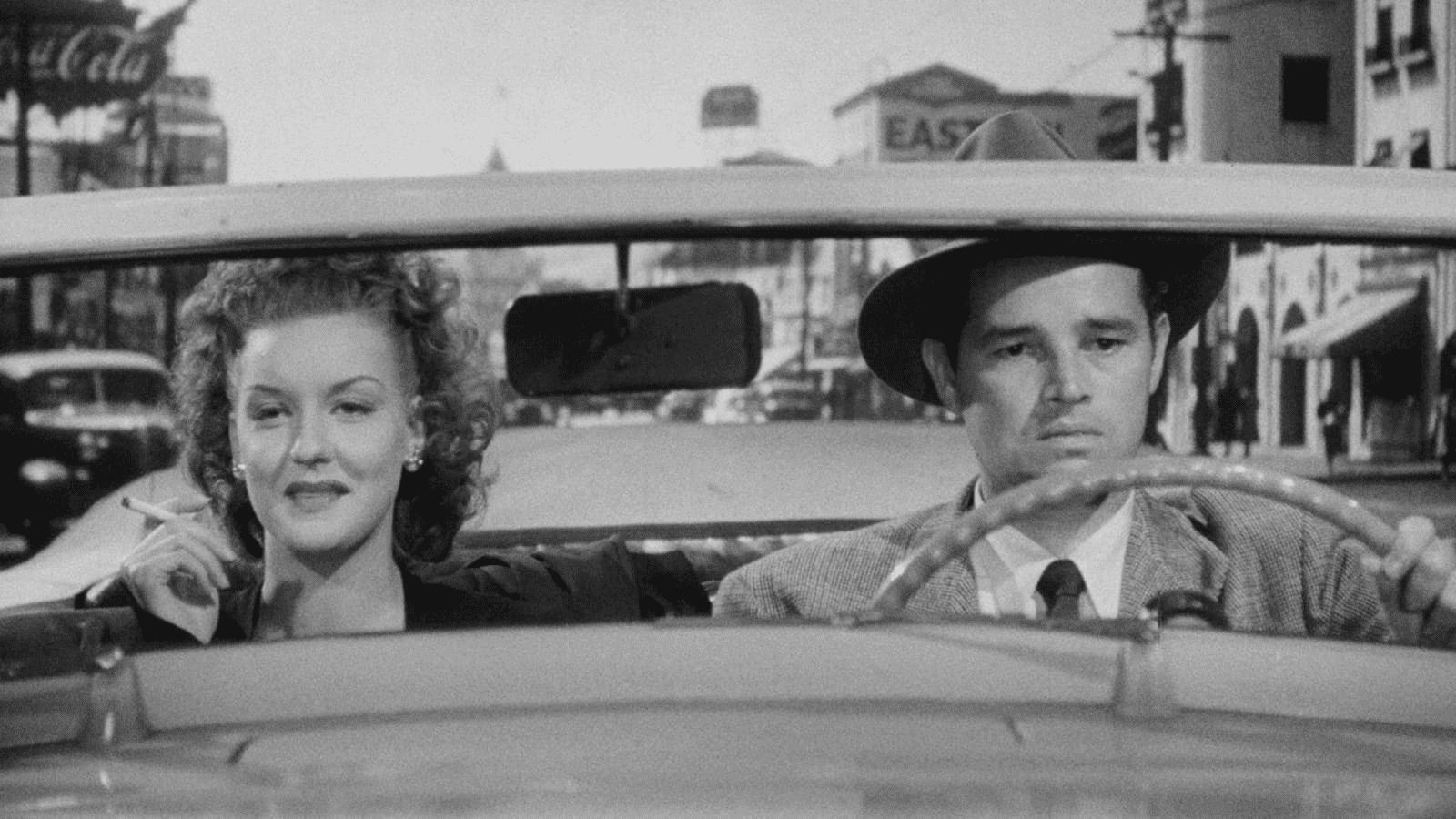
Old school rear projection in Detour
To avoid this, a crew may use chasing lights, which are a bunch of lights placed next to each other that are programmed to turn on in succession to simulate a single moving light source.
More DIY methods include spinning lights around on a C-stand or twirling reflectors in front of stationary lights. With both these options make sure that you aren’t going to take a crew member’s head off.
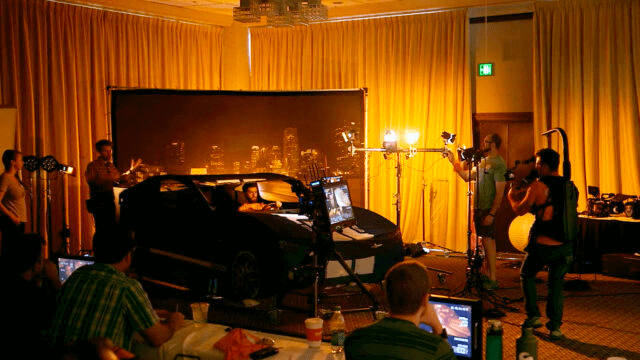
Poor man’s process • How to shoot a car scene without driving
Of course, with virtual production, the LED screen will provide the moving light for you. The same could be said, though to a lesser extent, for rear projection.
The Poor Man’s Process is very common, and has become a bit of a misnomer. Sure, you can pull it off for relatively cheap with a couple friends, but on larger sets, it can get just as expensive as a shoot in a moving car. Getting a car inside a virtual production studio, for example, is going to cost you a pretty penny.
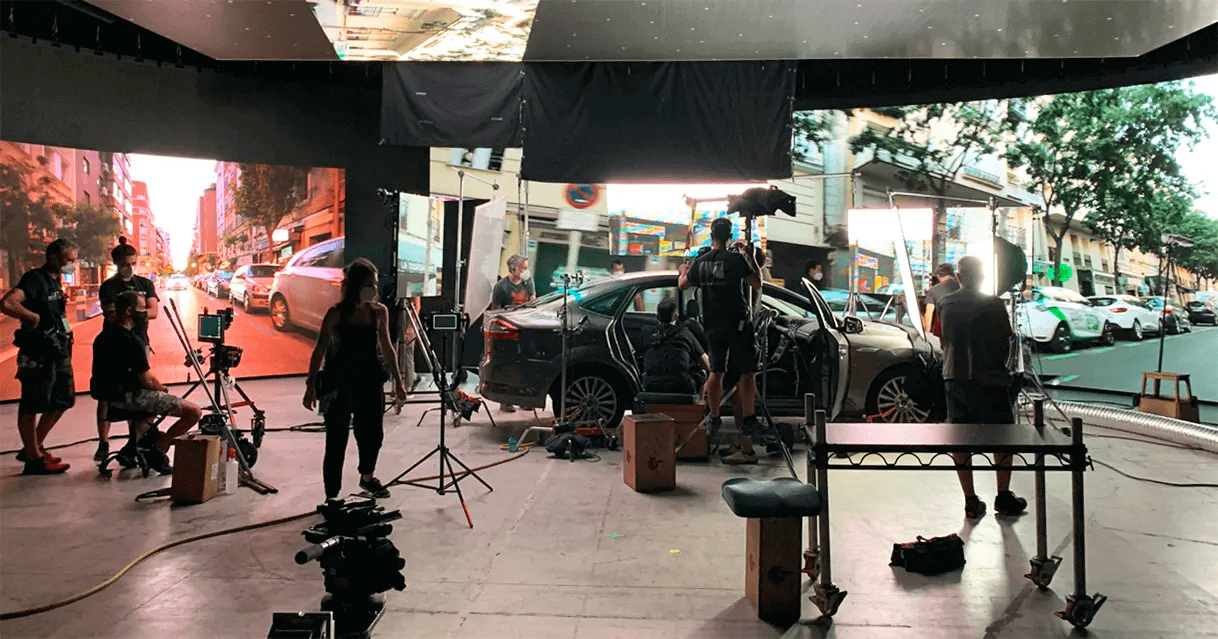
Poor man’s process with virtual production
Regardless of cost, the perks of this approach are numerous. Above all else, the Poor Man’s Process offers a filmmaker control. You can get the lighting and background just right, and giving notes to the actor is a lot easier. And then there’s the aspect we’ve yet to discuss: sound.
Best Driving Scenes in Movies
Recording Sound in a Car Scene
If you’ve driven in a car before, you know that it comes with a lot of ambient noise, from the low hum of the engine to the wind from the windows and the road under the tires.
Of course, none of this is an issue if you are utilizing the Poor Man’s Process. You can treat the scene like any other, using a shotgun mic out of frame.
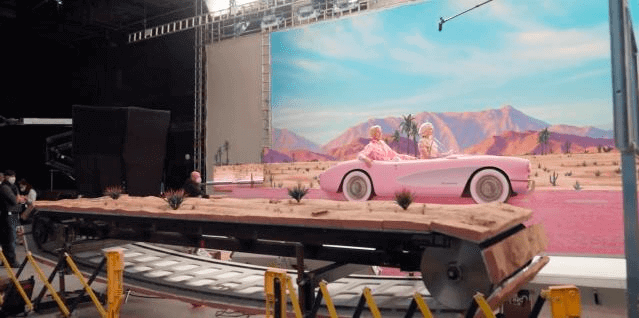
Barbie conversation car scene
Getting sound in a car which is actually moving is a bit harder. First, there’s all the ambient noise to contend with.
There’s only so much a production sound mixer can do in this context, but one rule of thumb is to have the mics’ back ends pointed towards the engine.
This is because most directional mics will try to cancel out noise emanating behind them.
You should also try to limit as much avoidable noise as possible. This means rolling up windows so wind isn’t blowing in, as well as turning off the AC or heat. Your actor may not be very happy about this if you’re driving around in the hot sun all day, so blast the air conditioning between takes if need be.
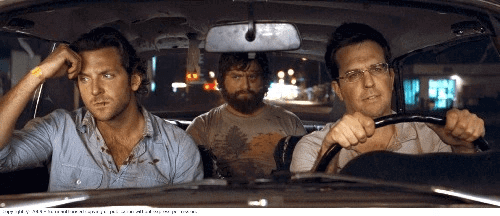
Angry actors
The second dilemma for sound in a moving car is space, or lack thereof. Typically, the sound mixer is in the lead car, and a boom operator isn’t able to fit in the picture car. This means that the microphones have to be set up within the car prior to shooting.
One popular method is tucking lavaliers into the car’s visors. This hides them and also naturally points them in the direction of the actor’s mouth.
Lucy production sound mixer Stéphane Bucher took this one step further, as you can see in this behind-the-scenes video:
Lucy BTS
Sound captured in a moving car is never going to be perfect. There are just too many factors working against it. That’s where post work comes in. A dialogue editor might remove the low ends to get rid of engine noise, or they can add their own car ambience to mask any imperfections. If it’s really bad, there’s always ADR (but it has to be really, really bad).
Shooting a car scene requires inventiveness and ingenuity. Like with any shoot, there will be variables you didn’t anticipate once you arrive on set. The key is to be prepared to think on your feet and pay attention to the details. And, it bears repeating, make sure you prioritize safety.
Up Next
How to Write and Direct Action
So now you know how to shoot some of the best car scenes in movies. Now, let’s expand to the world outside of vehicles by looking at directing action. In this post, we look at everything that goes into a great action scene like those in Kingsman.
Up Next: Writing and Directing Action →
Showcase your vision with elegant shot lists and storyboards.
Create robust and customizable shot lists. Upload images to make storyboards and slideshows.
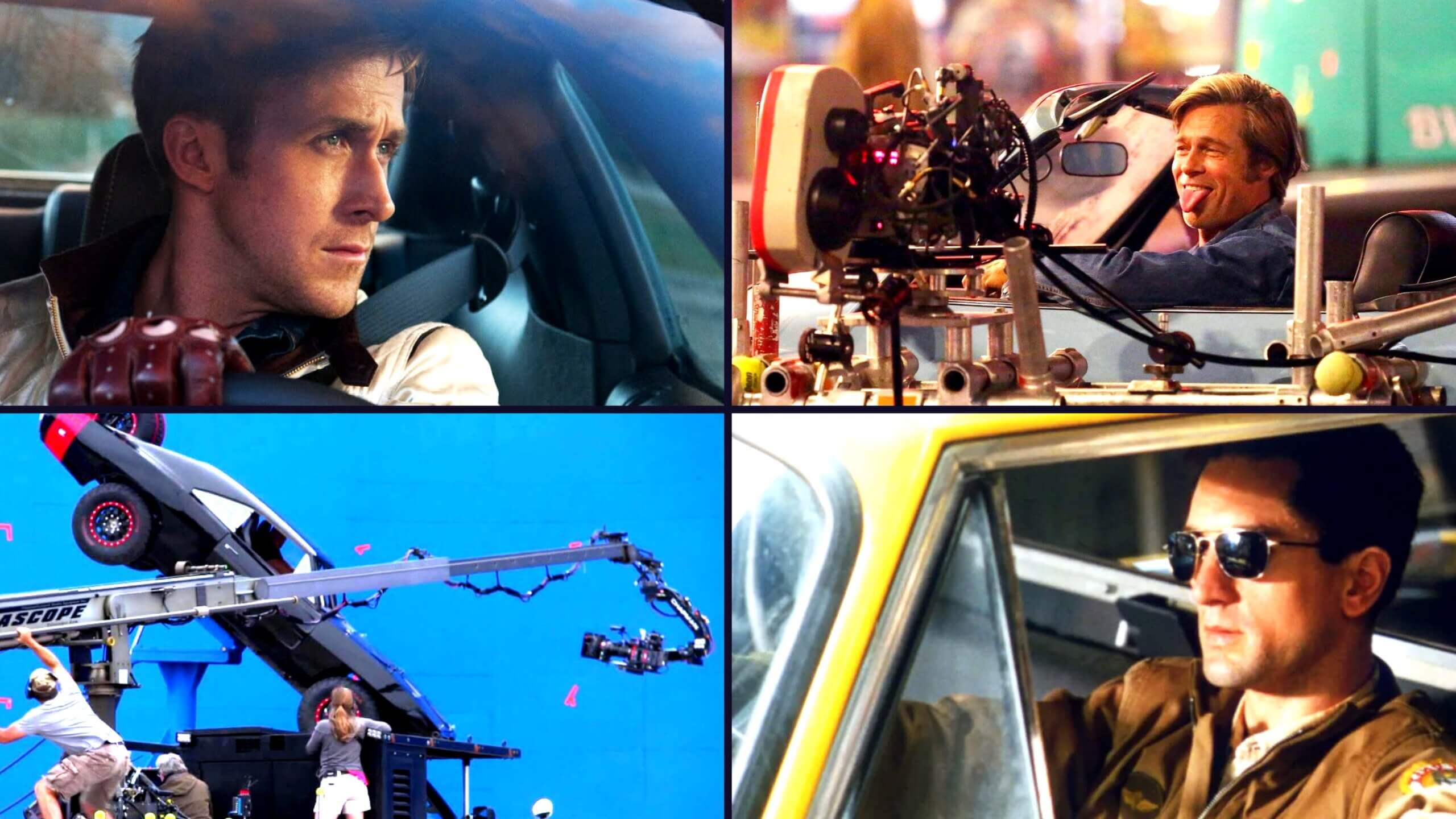
We appreciate